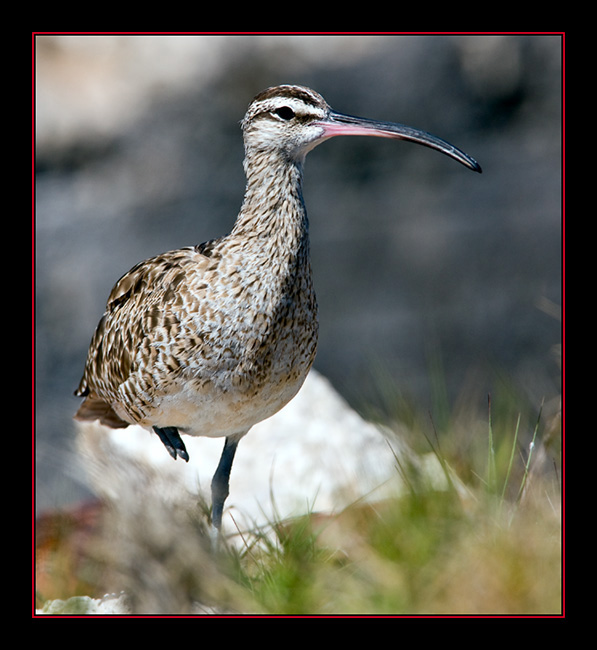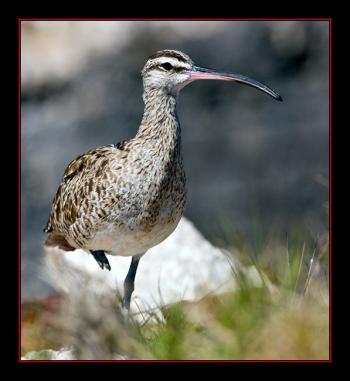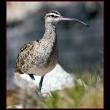Pingo, the hurricane whimbrel
A whimbrel is a large brown shorebird that's almost as big as a laughing gull, with a distinctive long, down-curved bill and black stripes on the head. Whimbrels nest in the tundra of Canada and Alaska and winter along coastlines anywhere from the southern U.S. through Central America and the Caribbean to southern South America.
Here in Maine, southbound birds can be seen from late July through September, stopping at salt marshes and mudflats to probe for worms and crabs, and occasionally in blueberry fields or other open areas to feed on berries and perhaps grasshoppers or other large insects. This latter habit is one that they shared with a smaller close relative that once occurred in Maine at times in large numbers, the now-extinct Eskimo curlew.
The last Eskimo curlew ever documented by a photograph was seen in 1962 in Texas. The last undisputed record of the species on Earth was shot in Barbados in 1963. But Maine’s last record was of a bird shot near Schoodic Point in 1929. Eskimo curlews were regularly shot in the hundreds or even thousands to sell at big city markets. In southern Maine during the late 1800’s, hundreds were occasionally shot when weather forced migrating Eskimo curlews to congregate in open fields, fetching top dollar for the gunners working for swanky restaurants in Boston hotels.
Whimbrels also were once popular with market hunters. However, they tended to be more wary and their migration was more spread out – so they were spared from complete extinction.
One of the mysteries that the whimbrels continued to keep was where birds from different migratory stop-over locations were coming from and going to. With the invention of new satellite transmitter technology small enough and sturdy enough to affix to a bird the size of a whimbrel, a collaborative tagging project began with a few whimbrels at a stop-over location in Virginia.
These birds have been followed for a number of years, showing amazing – and sometimes sad – results. Last fall several birds made their way through or around major hurricanes, migrating well out to sea from the southeastern U.S. coast. Amazingly, the birds made it to the Caribbean but sadly, two of these whimbrels landed on Guadeloupe where there is still a shorebird hunting tradition and both were killed shortly after arriving.
This summer, the whimbrel researchers traveled up to the Mackenzie Delta region of the Northwest Territories and tagged birds on their nesting grounds. The birds traveled the thousands of miles from the Mackenzie Delta across Canada to the Maritimes to fatten up. Then they set out over the ocean, headed toward Africa. After as many as six straight days of constant day-and-night-flying, they were still many hundreds of miles from land. The winds blowing across from Africa pushed them steadily toward northern South America where they made landfall. One of them had flown non-stop for over 4,000 miles!
The most recent whimbrel following this route, nicknamed Pingo by the researchers, flew smack into the still-forming hurricane Isaac last week. Many of us watched the daily map with trepidation to see if Pingo could survive the brutal winds after already having flown for many days without rest. Amazingly he somehow had the stamina to get around Isaac and fly another 400 miles to land safely on the coast of Brazil late last week.
Whimbrels can be seen along the entire coast of Maine, including in the Boothbay region. Usually we see several on the annual fall Boothbay Region Land Trust trip to Damariscove Island. If you see one, wish it luck!
Event Date
Address
United States

























